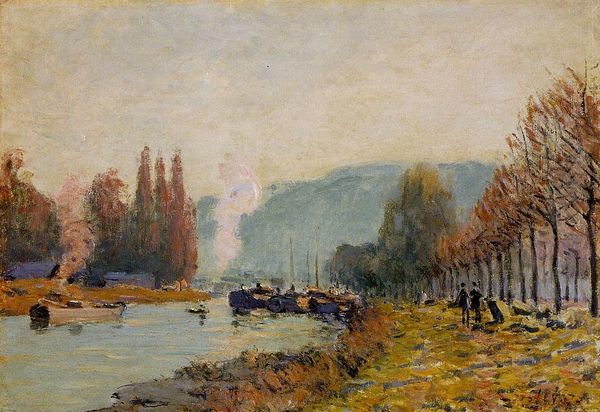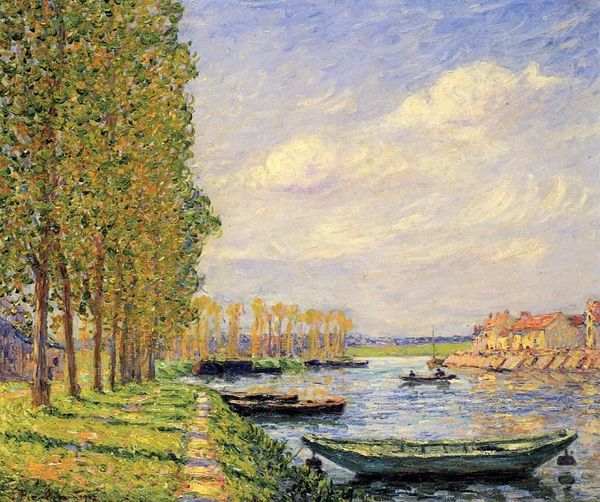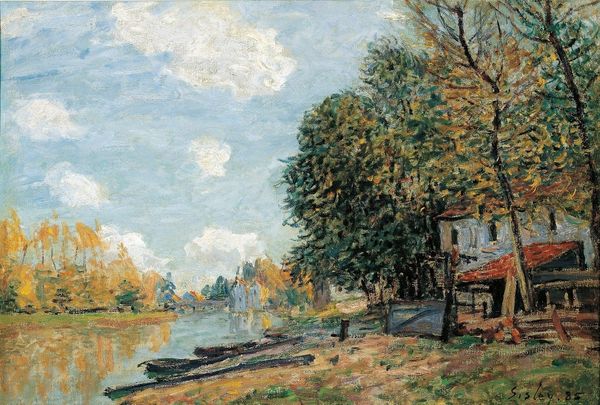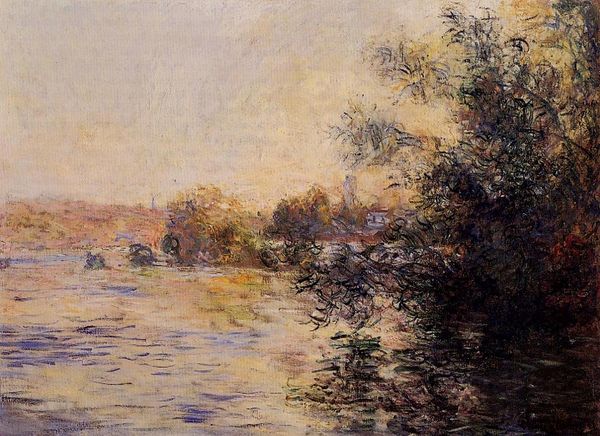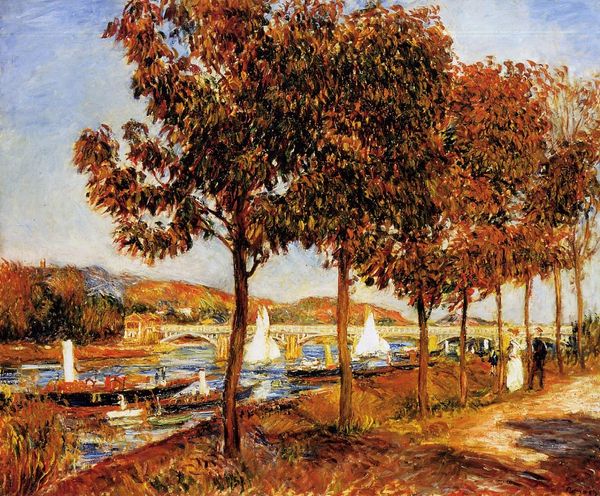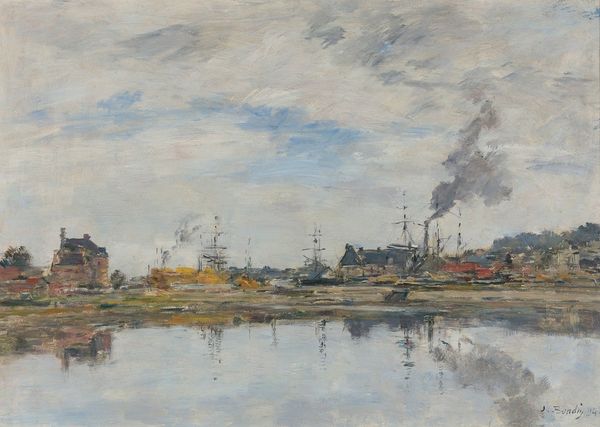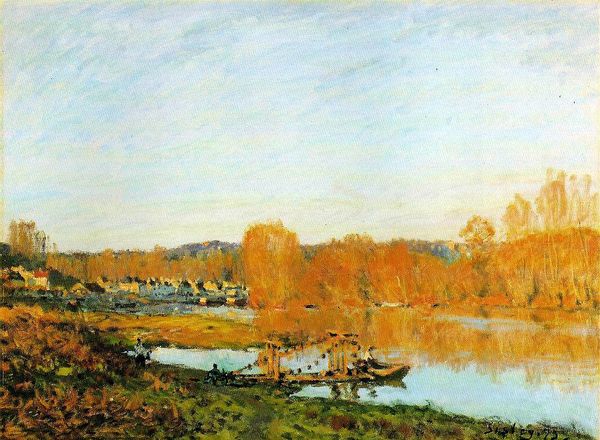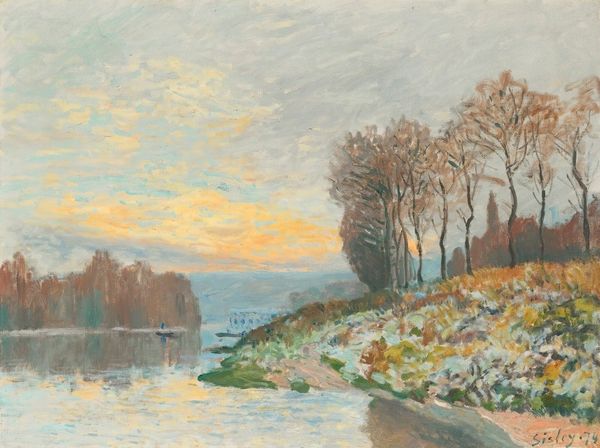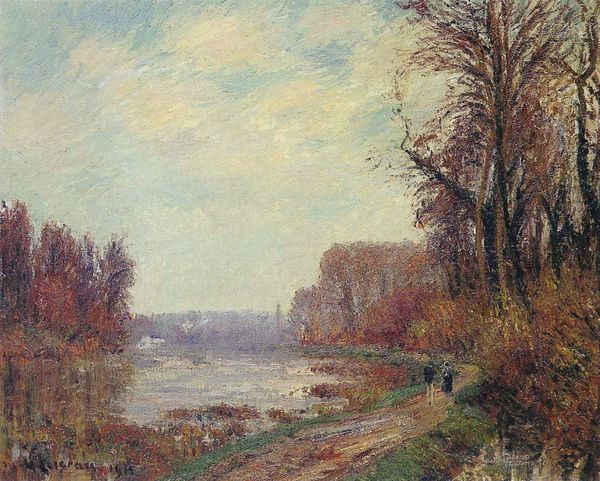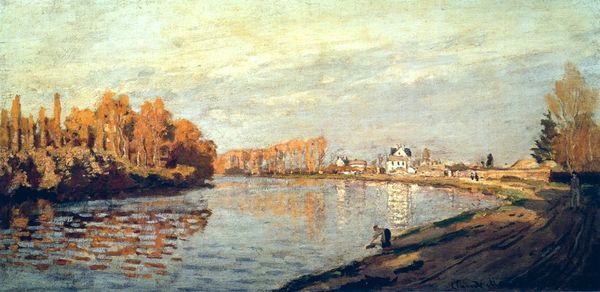
Dimensions: 44 x 60 cm
Copyright: Public domain
Curator: Looking at Pissarro's "The Seine at Marly" from 1871, I’m immediately struck by the palpable atmosphere, this embrace of a riverside day. Editor: My first impression is of industry nestled surprisingly gently within nature. That plume of smoke belching from the steamboat – it’s like a dark exclamation point punctuating an otherwise idyllic scene. Curator: It’s interesting that you pinpoint the smoke. I always felt he uses that vertical line to mirror the trees that rise up along the water. There is an overall sense of these vertical lines rising and meeting that atmospheric, ephemeral sky. Editor: But consider what fueled that smoke – coal, surely. And the labor involved in extracting and transporting that material. The steamboat itself represents industrial advancements reliant on exploiting natural resources and human work. Does Pissarro address any of this directly? Or does he aestheticize it? Curator: I feel he offers a kind of synthesis, acknowledging the undeniable presence of industrial advancement in the everyday, while also finding moments of light dancing on the water and a palpable intimacy in that small, distant couple strolling by the river. Editor: Right, and those are beautiful, fleeting moments, no doubt rendered with an innovative technique for capturing light. But technique is always tied to available materials. Oil paint in tubes, readily available at the time, allowed Pissarro to work "en plein air," giving us this slice of life directly experienced and observed. That materiality shapes the art itself. Curator: Precisely. It makes me think about how fleeting it all is: the dance of sunlight, the puff of smoke, the blush of a couple walking beside the Seine, and here we are over a century later still seeing and feeling it through the tangible mark of oil on canvas. It becomes its own sort of ephemeral act, just existing now only in memory and materiality. Editor: That’s a wonderful thought, actually. Seeing the materiality of everyday life in Pissarro’s painting offers a unique lens. Instead of just an idyllic escape, it provokes considering those elements of labor and production that went into that moment of captured beauty, what labor made it possible to experience the pleasure of leisure. Curator: Yes, I will see that steamboat differently now, thinking not just of it mirroring a tree but also remembering the laborers who brought it to that water and the consumers who rode it into this timeless scene.
Comments
No comments
Be the first to comment and join the conversation on the ultimate creative platform.
